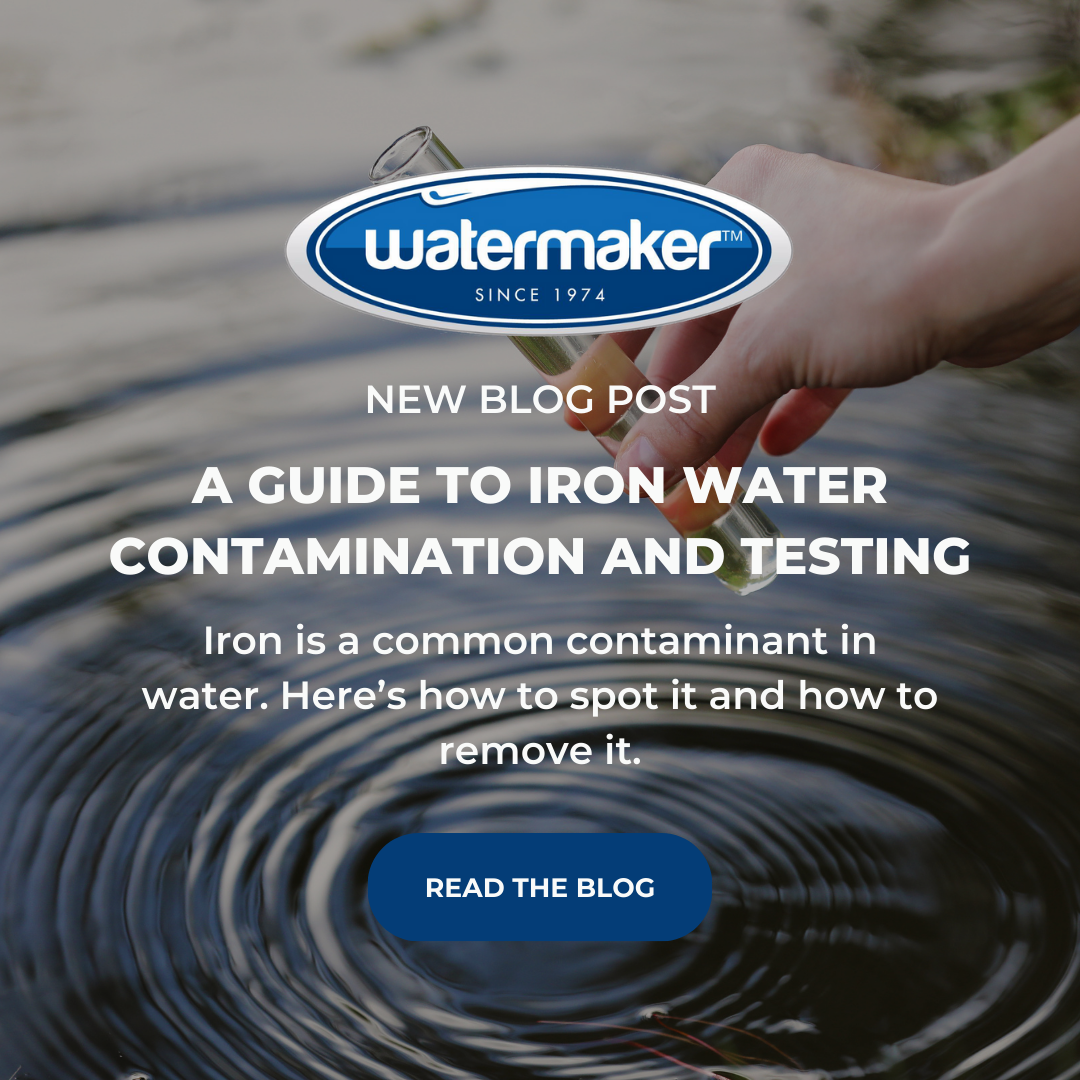Iron & Water Testing. Iron is a common contaminant in water. Here’s how to spot it and how to remove it.
One of the most common water contaminants is iron. Though our bodies need iron, many people are concerned about whether or not their drinking water has very high levels of iron and may even be seeing some signs of high iron levels around the house. Today we’ll see the different ways that iron gets into your water, how to spot the problems that iron causes, and how to remove iron from your water.
How Does Iron Get In Your Water?
Some areas have topography (meaning rocks and soil) that has naturally high levels of iron, which flows and leaches into the groundwater supplies. Well water can also contain higher levels of iron. You may have high levels of iron in your water if you live near areas that perform mining and other industrial processes. In addition, old or corroding water pipes can often play a part in high levels of iron in water.
What Are Signs of Iron Contamination?
The most common signs of high levels of iron in your water include:
- Brown, red, or yellow staining on plumbing fixtures like toilets, sinks, and tiles that are frequently exposed to water
- A metallic taste and odor to your water that you find unpleasant
- Staining on clothing after using the washing machine
- Clogged wells and pumps (if using well water)
- Corrosion of pipes and fixtures
How to Test for Iron in Water?
If you want to get your water tested to see what your iron levels are, here are some tips on collecting water for a sample:
- Use a clean container that has not been contaminated with other substances
- Take a sample from a tap that is connected to your main water source that you use on a daily basis.
- Let the water run for a few minutes before collecting the sample to flush out any stagnant water in the plumbing.
You have a few options for testing your water. You can buy an at-home water testing kit, which typically involves using strips that will change color according to your iron levels. You can also take a water sample to a professional company like Watermaker to test not only for iron but also other contaminants. Finally, you can get your water tested at a professional laboratory if you are really concerned about contaminants in your water supply.
How to Remove Iron from Water?
It only takes one-half part per million of iron to cause staining in your home. After getting your water tested, if your iron level is 2 or more parts per million, we recommend investing in an iron removal and water filtration system.
Watermaker is proud to be a supplier of the ETF 2300 AIV Series of water filtration systems, which also removes iron. Our iron filters and water filtration systems can help prevent unwanted problems, including staining, foul smells in water, and heavy sediments.
Reach out to us today to learn more about our ETF 2300 AIV Series water filtration system, which also removes iron, along with our wide range of water filtration systems, providing you with clean and safe drinking water in every tap of your home.



